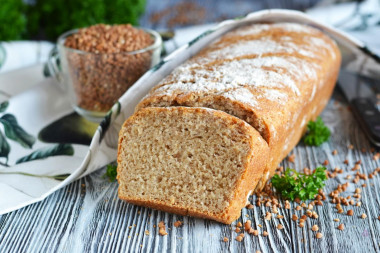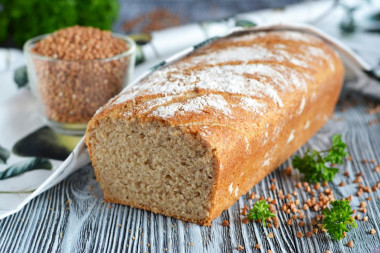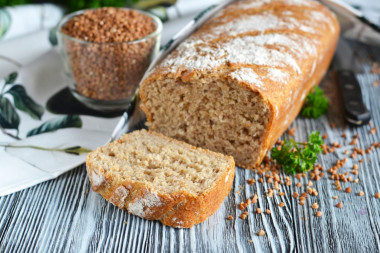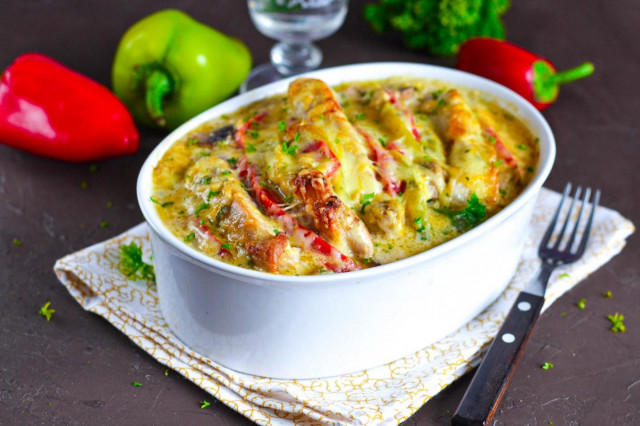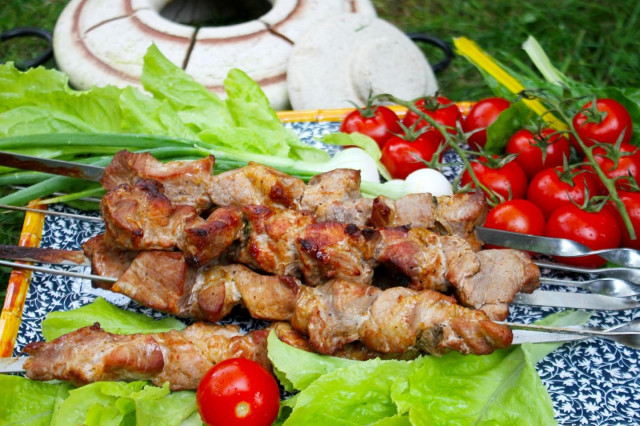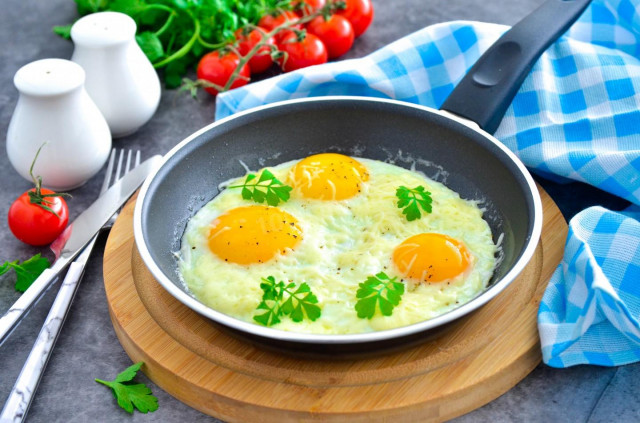Composition / ingredients
Step-by-step cooking
Step 1:

How to make buckwheat bread? Prepare the necessary ingredients. You can use ready-made buckwheat flour or grind it yourself in a buckwheat coffee grinder.
Step 2:
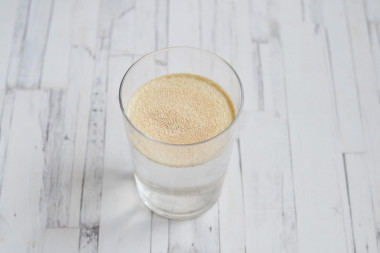
In warm water heated to 37-40 ° C, dissolve the sugar. Pour in the dry yeast and leave in the heat for 10 minutes until a fluffy cap appears on the surface.
Step 3:

If the caps have not appeared, then either the yeast is spoiled, or the water has overheated and the dough will not rise.
Step 4:

Fry buckwheat, stirring, in a dry frying pan until a bright aroma appears.
Step 5:

Pour the buckwheat into a bowl and cool.
Step 6:

Grind buckwheat in parts in a coffee grinder. You can grind the grits to a state of homogeneous flour or leave them in the form of tiny grains. It is important that the grains are not too large, otherwise they will crunch strongly and spoil the impression of bread.
Step 7:
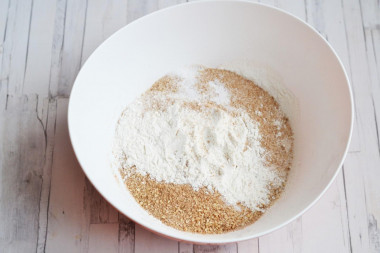
Sift wheat flour into a bowl. Add ground buckwheat and salt. Mix everything together.
Step 8:
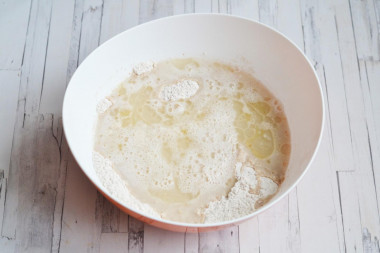
Pour in the activated yeast and vegetable oil. Knead the dough thoroughly for about 10 minutes, until it almost completely stops sticking to your hands. If necessary, add a little more flour.
Step 9:
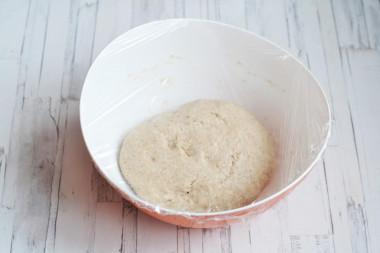
Form a ball of dough, put it in a bowl, tighten with a film and leave it in the heat for 1 hour to rise.
Step 10:
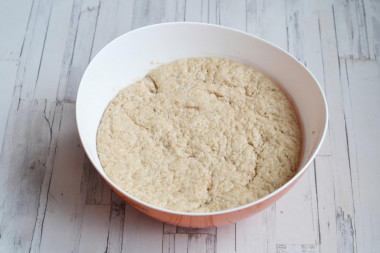
The dough rises strongly enough and becomes lush.
Step 11:
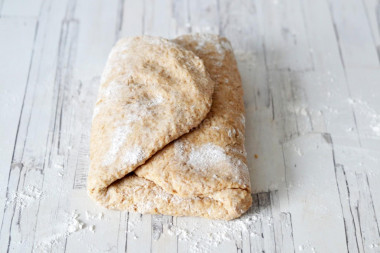
Knead the dough, stretch it in different directions. Fold the two sides overlap each other. Similarly, pull the dough to the other two sides and also fold in the other direction.
Step 12:

Form a blank of the desired shape from the dough.
Step 13:
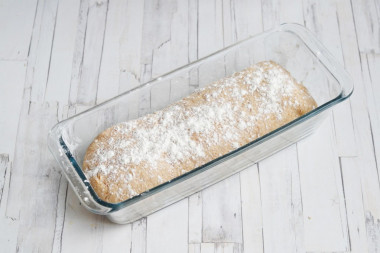
I just put the dough in a long floured rectangular baking dish. Dust the surface of the dough with flour from above.
Step 14:

Cover the mold with a napkin and leave to melt for 25-30 minutes.
Step 15:
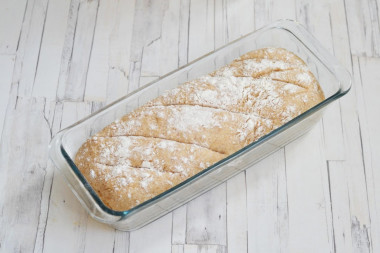
If desired, you can apply shallow notches to the surface of the bread with a sharp knife.
Step 16:

Preheat the oven to 200 ° C and place a baking tray with water on the bottom. Bake the bread for 25 minutes at 200 ° C. Then lower the temperature to 180 ° C, cover the mold with a sheet of foil and bake for about 20 minutes more. The exact time depends on your oven. The bread should have a light brown crust . Remove the finished bread from the mold and cool it on the grill and serve it to the table. Bon appetit!
Be prepared for the fact that you may need more or less flour than indicated in the recipe. Focus not on the amount of flour, but on the desired consistency of the dough. To avoid mistakes, read about flour and its properties!
Keep in mind that everyone's ovens are different. The temperature and cooking time may differ from those specified in the recipe. To make any baked dish successful, use useful information about the features of ovens !
Important! Using dry yeast, it should be borne in mind that they occur in two forms: active and instant (read the instructions carefully before use!).
Active dry yeast looks like beads or small balls. Before applying them, they must be brought out of "sleep mode". To do this, the active yeast is diluted in warm sweet water, milk or whey. The formed bubbles, foam or "cap" indicate that the yeast is ready for further use. Active dry yeast must be brought to complete dissolution in the liquid, otherwise, due to the remaining grains, the dough may not rise and the baking will be spoiled (yeast grains that have not dissolved in the liquid and got into the dough will not disperse on their own, which means they will not work).
Instant dry yeast is easier to use. They do not need to be activated before use. Such yeast, along with other ingredients, is simply added to the dough. As a result, the baking time is reduced.
It should also be remembered that both types of dry yeast may differ in their activity from different manufacturers.
Caloric content of the products possible in the composition of the dish
- Buckwheat (whole grain) - 335 kcal/100g
- Dark buckwheat flour - 333 kcal/100g
- Light buckwheat flour - 347 kcal/100g
- Boiled buckwheat - 163 kcal/100g
- Buckwheat - 313 kcal/100g
- Granulated sugar - 398 kcal/100g
- Sugar - 398 kcal/100g
- Vegetable oil - 873 kcal/100g
- Salt - 0 kcal/100g
- Water - 0 kcal/100g
- Wheat flour - 325 kcal/100g
- Dry yeast - 410 kcal/100g


